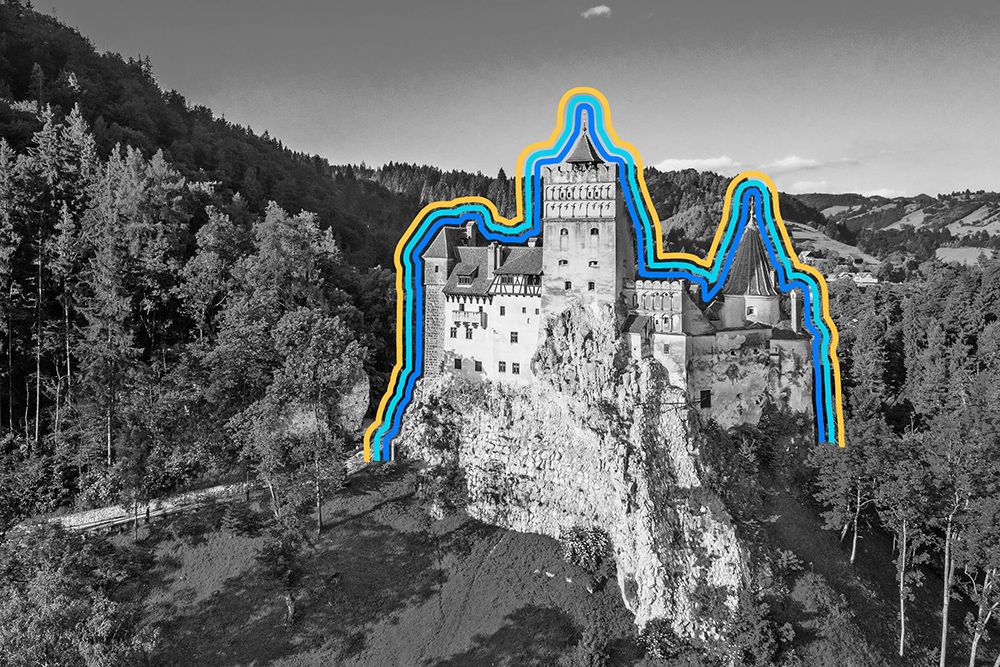

You might be forgiven for not realizing Transylvania is a real place — or for not knowing much about it beyond its status as the supposed birthplace of Dracula. Vlad “the Impaler” Dracul is indeed linked to this region of Romania, and though the vampire legend he gave rise to may be more fiction than fact, Transylvania itself is very much real. That legend began with Bram Stoker’s 1897 novel Dracula and grew from there, including the 1931 film adaptation starring Bela Lugosi (who was himself born in Romania) and the equally influential silent movie Nosferatu.
As is often the case, the truth about this area of the world is even more interesting than the stories surrounding it. Here are six things you might not know about Transylvania.
The Name “Transylvania” Has an Evocative Backstory

Depending on how you translate it, Transylvania means “beyond the forest” or “on the other side of the woods.” A document dating back to 1075 and written in medieval Latin refers to the region as ultra silvam, which is where we get the former translation. It's also been called Ultrasylvania, a medieval Latin translation of the Hungarian name Erdő-elve. As its name implies, Transylvania is heavily forested and quite beautiful — were it not for the spooky connotations, it would likely be just as popular to visit as Europe’s other idyllic locales.
There Are No Vampires, But There Are Bears

Six thousand brown bears call Transylvania home, or nearly 60% of the species’ entire population in Europe. The Apuseni Mountains are even home to the appropriately named Bears’ Cave, which received its name after the skeletons of 140 cave bears were discovered there in 1983. The brown bears here are often quite large as well, with one specimen tipping the scales at nearly 1,100 pounds. And while there have been a handful of tragic encounters with humans, the majority of these imposingly beautiful creatures live far from civilization in the Carpathian Mountains, which are also home to wolves, lynxes, and other interesting wildlife.
Dracula’s Castle Isn’t the Only Famous Fortress

Bran Castle is the most well-known of Transylvania’s castles due to its connection to the Dracula mythos, but it’s far from the only notable castle in Transylvania. There’s also Corvin Castle, which is one of the largest in Europe and is counted among the Seven Wonders of Romania, not to mention the likes of Peles and Bánffy castles. The former looks like it came straight out of a storybook and was the first castle in Europe with electricity, while Bánffy's history can be traced to the 14th century; it was nearly burned down by Germans retreating from Allied troops near the end of World War II.
Still, there’s no denying how fascinating the legend of Bran Castle — known outside of Romania as Dracula’s Castle, of course — has become. There’s no evidence that the castle inspired Bram Stoker when he wrote Dracula or that Vlad himself ever visited the medieval structure. However, that didn’t stop the Communist Party of Romania from deciding in the 1970s to present Bran Castle as the true home of the world’s most famous vampire. That decision wasn’t arbitrary, as the castle certainly looks the part — if you were to conjure an image of Dracula’s not-so-humble abode, there’s a good chance it would look exactly like the place.
You Can Visit the Best-Preserved Medieval Citadel in Europe There

Sighișoara, the supposed birthplace of Vlad Dracul himself, is a town of 28,000 people dating back to the 12th century. Its fortified historic center is so well-preserved that UNESCO designated it a World Heritage Site in 1999, particularly for how important it is to the history of Transylvanian Saxons. The German-speaking group has been in the area so long that the region was technically part of Hungary when they first arrived there; the Saxons also played a major role in Transylvania’s feudal system for hundreds of years. Sighișoara remains the best-preserved inhabited medieval citadel in Europe, not to mention a surprisingly charming spot to visit.
The Coat of Arms Is Seriously Awesome

Vexillologists will get a kick out of this 18th-century symbol, which was granted by Maria Theresa of the Hapsburg dominions. As symbolically rich as it is visually arresting, the coat of arms features an eagle representing Transylvania itself, a sun and crescent moon for the Székely Land region of Romania, and seven towers representing cities populated by Saxons. Transylvania had other heraldic symbols in the centuries prior, but none were granted with as much fanfare or lasted as long — it’s still in use today.
Transylvania Hosts Romania’s Biggest Film Festival

Cannes, Venice, and Berlin may attract more headlines, but the Transylvania International Film Festival has emerged as one of the most adventurous events of its kind in Europe. Founded in 2002 and taking place in Cluj-Napoca, Transylvania's cultural center and unofficial capital, it draws more than 100,000 attendees each year and has highlighted adventurous films like Babyteeth, Monos, and Oslo, August 31st. (Their vampire-themed poster game is on point, too.)
